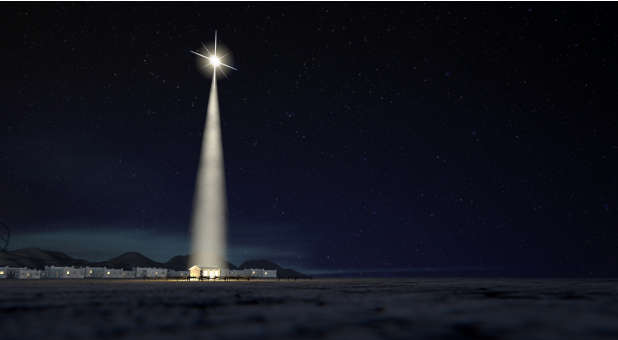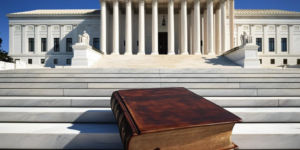Follow the Science to Jesus and His Miraculous Birth
Read Time: 4 Minutes 14 Seconds
Faith in Jesus and His miraculous birth does not require the so-called “blind leap of faith.”
The reliability of the Bible has been demonstrated by the modern science of archaeology. Archaeology has shown that Luke, who gives the most detail concerning Jesus’ birth, is a world-class historian, accurate in the minutest details in his Gospel and in Acts.
Luke gives the most detailed account of the nativity and mentions Mary 12 times, more than any other biblical writer. In addition to the birth of Christ, he also gives special, detailed attention to the birth of John the Baptist and many see his gynecological interests to be a result of his training as a physician.
At the beginning of his Gospel, Luke, whom Paul calls “the beloved physician” in Colossians 4:14, indicates that he has made a thorough investigation of the things about which he is writing, including the Virgin Birth. This investigation included his utilization of eyewitness accounts of the events described.
The detail Luke presents about the Virgin Birth does indicate that he has derived his information from a primary source, either Mary herself or someone to whom Mary had relayed the intimate details of the event.
Luke Gains a Reputation for Accuracy
At one time, it was thought that Luke was mistaken concerning the events he portrayed surrounding the birth of Christ (Luke 2:1-5). Critics argued that there was no census and that everyone did not have to return to their ancestral home. They also pointed out that Josephus had dated the governorship of Quirinius of Syria, whom Luke mentions, as beginning in A.D. 6, too late for the birth of Christ.
In every case, however, modern archaeological discoveries have proven the critics to be wrong. In the case of Quirinius, it was found that he actually served two separate terms as governor, the first beginning around 7 B.C., which fits perfectly with the time of Christ’s birth. The accuracy of Luke as a historian was confirmed by the famous historian, A.N. Sherwin-White, who carefully examined his references in Luke/Acts to 32 countries, 54 cities and nine islands, finding not a single mistake (Hyatt, “Christmas Is For Real,” 9).
The late F. F. Bruce, one of the most respected of New Testament scholars, noted that where Luke has been suspected of inaccuracy by modern critics, archaeology has again and again proved Luke to be right and the critics wrong (Hyatt, “Christmas Is For Real,” 8).
A World-Renowned Archaeologist is Convinced
The affirmation of Luke as a world-class historian, accurate in the minutest details, began with Sir William Ramsay (1851-1939), a world-renowned archaeologist and Oxford professor. Ramsay, an agnostic, set out to scientifically disprove the Bible, but his archaeological investigations carried him to a completely different conclusion.
Ramsay was a product of the skeptical, German higher criticism of the 19th century. He believed the New Testament to be an unreliable religious treatise written in the 2nd century by writers far removed from the events described. Ramsay decided he would demonstrate his thesis by retracing Luke’s account of Paul’s travels in Acts and doing archaeological excavations along the way.
However, after years of retracing Luke’s account of Paul’s travels and doing careful archaeological excavations along the way, Ramsay completely reversed his view of the Bible and first-century history. He became convinced that the Gospel of Luke and Acts were written in the first century by the traditional author, and he acquired a very high regard for Luke as a historian. He wrote,
“Luke is a historian of the first rank; not merely are his statements of fact trustworthy, he is possessed of the true historic sense; in short, this author should be placed along with the greatest of historians” (Hyatt, “Christmas Is For Real,” 10-11).
In 1896, Ramsay began publishing his discoveries in a book entitled “St. Paul the Traveler and the Roman Citizen.” The book caused a furor of dismay among the skeptics of the world, for its affirmation of the biblical record was totally unexpected. The evidence was, in fact, so overwhelming that many atheists gave up their atheism and embraced Christianity.
Over the next 20 years, Ramsay published other volumes showing how he discovered Luke to be accurate in the tiniest details of his account. In his book, “The Bearing of Recent Discovery on the Trustworthiness of the New Testament,” he wrote:
“You may press the words of Luke in a degree beyond any other historian’s and they stand the keenest scrutiny and the hardest treatment” (Hyatt, “Christmas Is For Real,” 11).
Ramsay eventually shocked the world, announcing that he had become a Christian. He wrote, “I set out to look for truth on the borderland where Greece and Asia meet, and found it here [in the biblical record].” He followed the science and it led him to Jesus.
Not only Ramsay, but other archaeologists have found their skepticism dissipating as they did the real scientific work in the field. William F. Albright (1891-1971), the renowned archaeologist and late professor of Semitic languages at John Hopkins University, began his career as a skeptic. But after years of archaeological investigations in the land of the Bible, he wrote,
“The excessive skepticism shown toward the Bible by important historical schools of the 18th and 19th centuries, certain phases of which still appear periodically, has been progressively discredited. Discovery after discovery has established the accuracy of innumerable details and has brought recognition to the Bible as a source of history (Hyatt, “Christmas Is For Real,” 11-12).
For the rest of this article, visit our content partner at biblicalawakeningblogspot.com. {eoa}
Bring Charisma magazine home with a subscription today!
This article is derived from Dr. Eddie Hyatt’s book, “Christmas Is For Real,“ available from Amazon and his website at www.eddiehyatt.com. Dr. Hyatt is also the author of “1726:The Year that Defined America,” which documents how the 18th century Great Awakening had a direct bearing on the founding of America and the abolition of slavery.







































